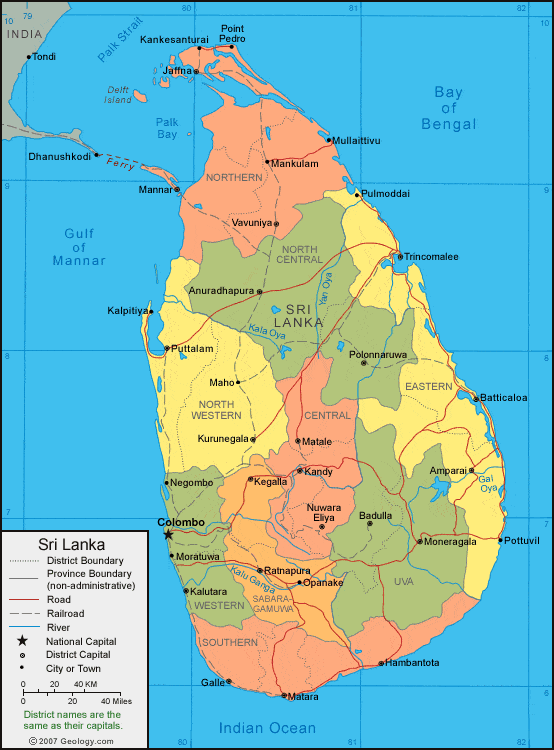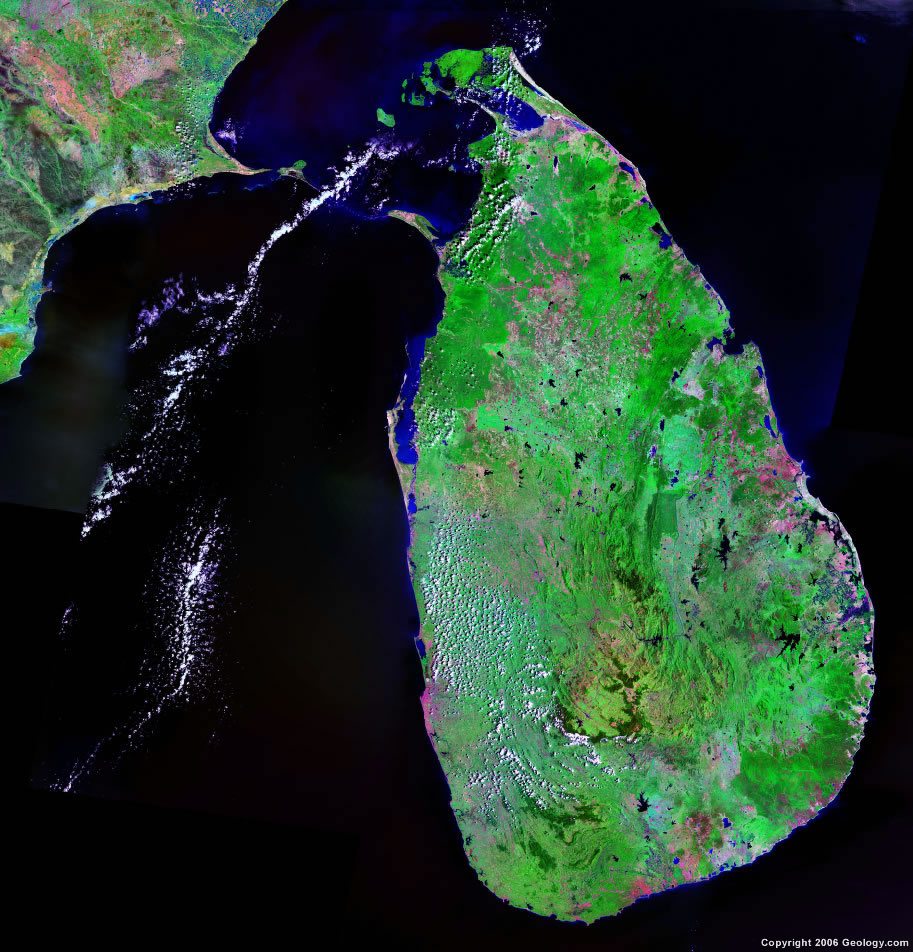Sri Lanka Map - Sri Lanka Satellite Image | ||||||||
 |
 | |
|
Sri Lanka Political Map
Sri Lanka Country Information:
Sri Lanka is located in southern Asia. Sri Lanka is an island that is bordered by the Gulf of Mannar to the west, the Bay of Bengal to the east, and Palk Bay to the northwest.
Sri Lanka Bordering Countries:
none
Sri Lanka Cities:
Ambalangoda, Ambalantota, Amparai, Anuradhapura, Badulla, Batticaloa, Bentota, Beruwala, Chilaw, Colombo, Galle, Hambantota, Hendala, Hikkaduwa, Jaffna, Kalpitiya, Kalutara, Kandy, Kankesanturai, Kattankudi, Kegalla, Killinochchi, Kurunegala, Maho, Mankulam, Mannar, Matale, Matara, Moneragala, Moratuwa, Mullaittibu, Negombo, Nuwara Eliya, Opanake, Panadura, Point Pedro, Polgahawela, Polonnaruwa, Pottuvil, Pulmoddai, Puttalam, Ratnapura, Trincomalee, Vavuniya and Weligama.
Sri Lanka Locations:
Bay of Bengal, Gal Oya, Gulf of Mannar, Indian Ocean, Kala Oya, Kalu Ganga, Koddiyar Bay, Mundal Lake, Palk Bay, Palk Strait and Yari Oya.
Sri Lanka Natural Resources:
Sri Lanka has mineral resources which include graphite, gems, limestone, mineral sands, and clay. Other natural resources for the country include phosphates and hydropower.
Sri Lanka Natural Hazards:
Sri Lanka has some natural hazards, which include an occasional tornado and cyclone.
Sri Lanka Environmental Issues:
The country of Sri Lanka has a number of environmental issues. The freshwater resources are being polluted by waste disposal, sewage runoff, and the industrial wastes. There is coastal degradation from the increased pollution, and mining activities. Issues regarding the land include deforestation, and soil erosion. The country’s wildlife populations are threatened by poaching and urbanization. The city of Colombo has air pollution.
 PDF (1.3 MB)
PDF (1.3 MB)
No comments:
Post a Comment